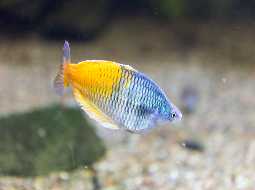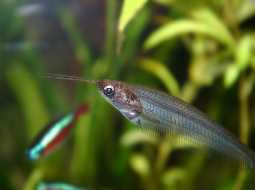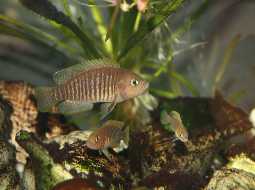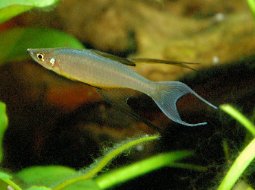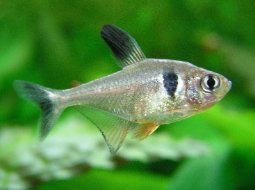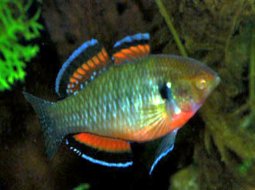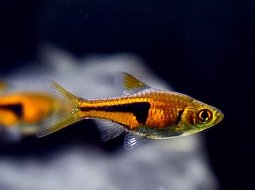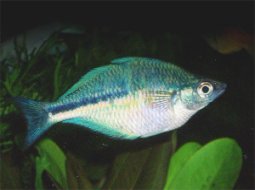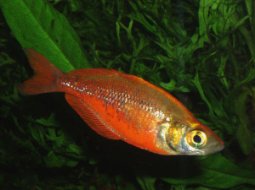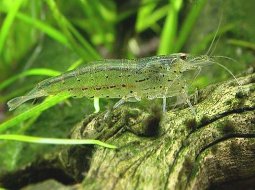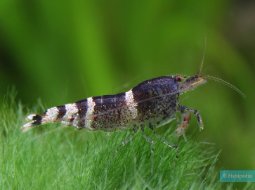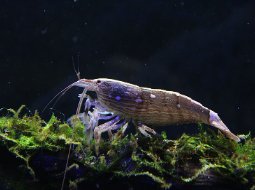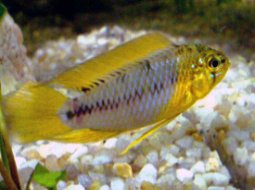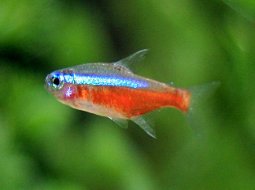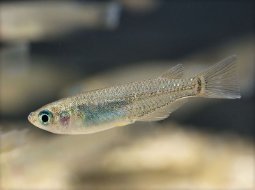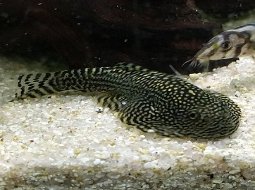
Loading Aqualapp ...
Care and Compatibility of Male siamese fighting fish - betta splendens male
Introduction
Betta splendens, commonly known as Betta or Siamese Fighting Fish, is a freshwater fish species native to Southeast Asia. The male Betta is especially renowned for its beauty and unique behavior, making it a popular choice for aquarium enthusiasts. Its long and colorful fins, displayed in full splendor during courtship and confrontations, are truly breathtaking.
Behavior
The male Betta is a territorial and solitary fish. It is known for its aggression towards other males of the same species, so it is recommended to keep it in an individual aquarium. Its behavior becomes even more fascinating during courtship, when it displays its majestic finnage and vibrant colors to impress the female. It's important to provide sufficient space and hiding spots in the aquarium for the male Betta to exhibit its natural behavior without causing harm to itself or other fish.
Sexual Dimorphism
Sexual dimorphism in Betta splendens is quite evident. Males have longer, more colorful fins than females, as well as brighter colors and more elaborate patterns. Additionally, males may build a bubble nest on the water surface during courtship and breeding.
Reproduction
The reproduction of the male Betta is a unique and captivating process. During courtship, the male builds a bubble nest on the water's surface, where it invites the female to spawn. After fertilization, the male collects the eggs and carefully places them in the nest, protecting them and ensuring an appropriate temperature. The male continues to guard and care for the hatched fry until they are large enough to fend for themselves.
Aquarium Conditions
Male Betta splendens, known as Siamese fighting fish, are notorious for their aggression towards other males of their species, so it's best to keep them alone in a tank or with females. They prefer aquariums with floating plants and hiding places, such as caves or plant leaves.
Feeding
The male Betta is a carnivorous fish and primarily feeds on insects and larvae in its natural habitat. In the aquarium, you can feed it with high-quality commercial Betta-specific foods, such as pellets and flakes, which contain nutritious ingredients. You can also supplement its diet with live or frozen foods like mosquito larvae or brine shrimp. Remember to avoid overfeeding and provide a balanced diet to maintain its health and vitality.
Complexity
Caring for male Betta splendens is relatively easy. They are hardy fish that can adapt to a variety of water conditions. However, they are prone to diseases like fin rot if not kept in a clean and stable environment.
In case you need more help, or if you want to know into any topic related to the betta splendens male (Male siamese fighting fish) and even any other species you can use the forums to ask what you need.
To do an analysis more detailed about coexistence and behavior of betta splendens male (Male siamese fighting fish) use the Aquarium simulation tool, if you do this you can test different ways to combine the Male siamese fighting fish with other fishes giving the dimensions and space on you aquarium, on this way you can known the optimal configuration for keep the fishes that you want.
You can also find out the 102 species compatible with the betta splendens male (Male siamese fighting fish) can live together.
Note: The parameters of the water such as PH and temperature are also used to calculate the compatibility of the species.
Compatible species (102)
Compatible (28 Species)
Compatible without any restriction
With Reservation (25 Species)
The Betta Fish can mistake the colorful tails or fins of the Poecilia reticulata with other bettas, so it could attack them, to reduce the chances of this happening it is recommended to have several Poecilia reticulata living with the betta.
The swimming speed of these fish can stress the betta fish and could make them sick.
Extreme care must be taken when joining male betta fish with a female, there may be aggressions, there must be hiding places so that the female can hide if necessary.
Compatible in some cases, it depends on the nature and personality of the fish.
It is probable that the Betta attack the otocinclus, especially in the tail fin however it depends more on the personality of the betta fish.
Las especies territoriales por lo general pueden convivir con especies protegidas con coraza, ya que no pueden hacerles daño por su dura piel, lo que si hay que tener en cuenta es tener un acuario con dimensiones favorables para que cada pez pueda delimitar un territorio, ya que la mayoría de peces acorazados son también peces de fondo y les gusta estar buscando lugares donde ocultarse.
Showdown over territory (1 Species)
Fish can live together as long as the space is spacious enough to delimit a territory, otherwise there may be aggressions for competing for the territory.
Considerable size difference (11 Species)
They can coexist while they are similar in size or the size difference is not very abysmal, since as the fish grows it increases the chances of eating its partner that did not grow much.
Compatible if space is enough (37 Species)
They can coexist together if the aquarium they share is large and spacious enough for both species to feel good, as some fish may attack others to feel that they have little space and try to eliminate the competition.
Male siamese fighting fish
betta splendens male
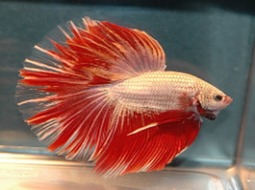
- Ph: 6.5 - 7.5
- Temperature (c°): 25 - 29
- Measures: 6 cm - 7cm
- Aquarium Capacity:
35 Liters - 9 Gallons - Alimentación: Carnivores
- Colores: Black, Blue, Green, Gris, Orange, Red, White, Yellow
- Comportamiento: Territorial, Territorial with its species
- Habitad: Asian
- Morfología: Bright colors
- Preferencias del Acuario: Natural plants
- Tamaño: Small
- Taxonomía: Fish
- Tipo de Agua: Sweet water, Tropical waters
- Velocidad de nado o movimiento: Normal
- Zona de Nado: Swim in the middle of the aquarium



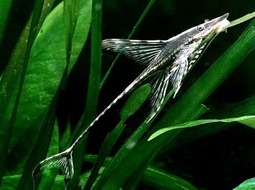
.jpg)
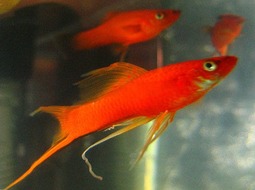
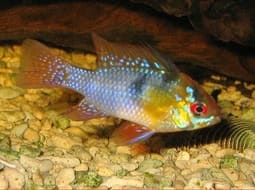
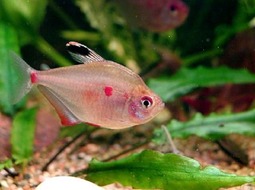


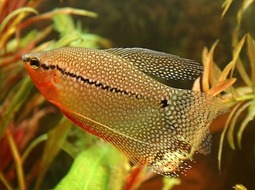

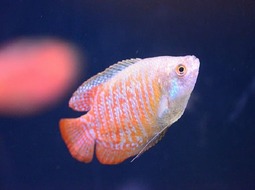
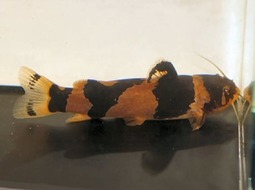
.jpg)

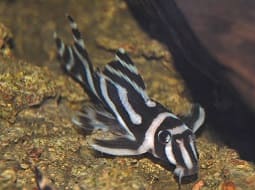
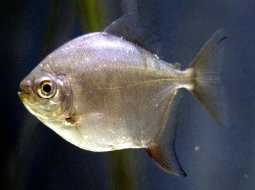

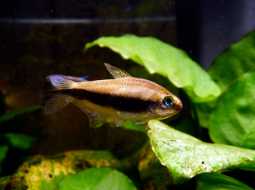
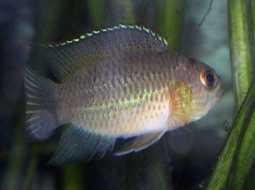
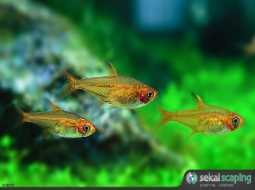
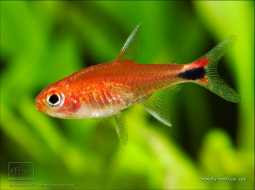
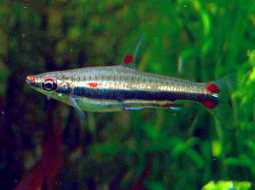




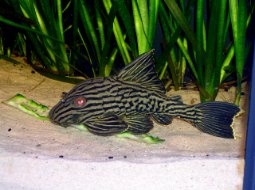

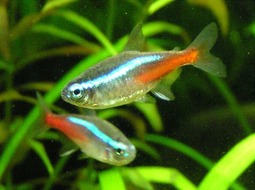



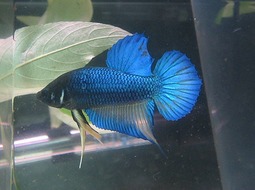
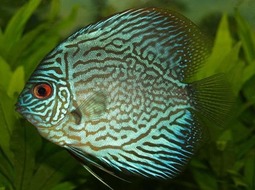


.jpg)



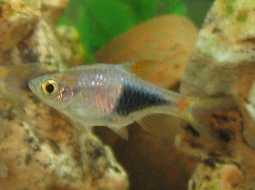

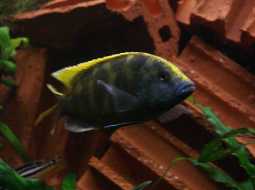

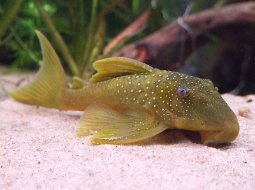
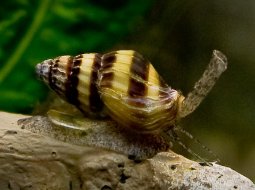










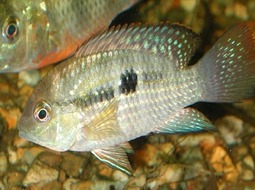
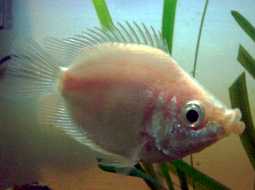
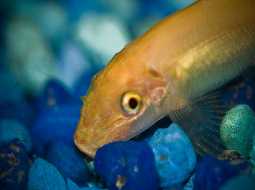



.jpg)
